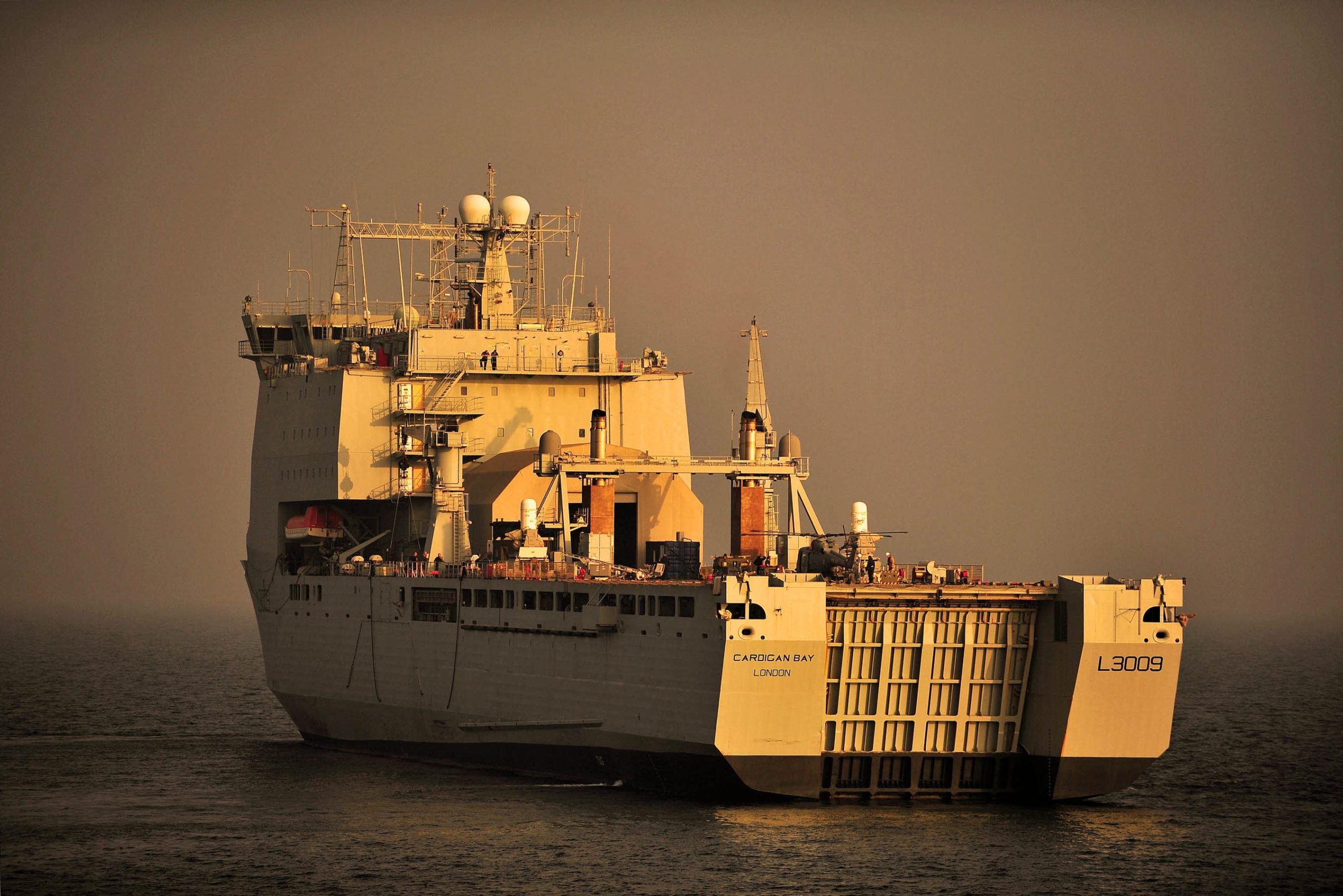
A multinational mine countermeasure exercise was recently concluded 13 April in the Arabian Gulf.
The two-week drill saw participation from France, the United Kingdom, and the United States.
The recently conducted Artemis Trident training exercise featured the participation of the USS Devastator (MCM 6), a mine countermeasures ship, and the RFA Cardigan Bay (L3009), a landing ship dock. The joint military exercise involved dive teams and explosive ordnance disposal technicians from the US Navy, UK Royal Navy, and French Navy.
During the first week, personnel from various navies aboard Cardigan Bay engaged in a professional exchange as part of their exercise. Across the event, attendees exchanged insights and strategies on how to efficiently detect, classify, and remove naval mines.
Motor Boat Harrier providing autonomous solutions
The Cardigan Bay is the host ship for the recently acquired Royal Navy Motor Boat Harrier, an 11m uncrewed boat capable of detecting underwater threats as part of autonomous mine-hunting operations in the Gulf. It has been included in the ten-year plan to replace the Navy’s existing fleet of mine countermeasure vessels. Its presence in the area will establish the groundwork for upcoming autonomous technology.
The Harrier has the ability to operate either autonomously, with pre-programmed missions, or remotely from a remote control centre located on a ship or on shore. Equipped with a side-scan sonar, she diligently scans the seabed for any lurking mines, promptly notifying onshore or offshore units of their precise location. In the coming years, she is set to collaborate with remotely operated underwater vehicles and a mine sweeping system.
In April 2021, the Australian, French, UK, and U.S. navies carried out mine hunting and clearance training in the Arabian Gulf as part of the previous iteration of Artemis Trident.
Autonomous mine-countermeasure investment
For the past two decades, advanced navies have been investing heavily in autonomous mine countermeasure (MCM) capabilities to reduce the risks and impacts of sea mines on naval operations. The US Navy initiated the LCS MM Program, which involves the acquisition of 48 Uncrewed Surface Vessels (USV) for the purpose of conducting mine-hunting missions. These unmanned vessels will be utilised for both Unmanned Mine Sweeping (UMS) and Remote Mine hunting (RMH) modules.
The United Kingdom and France are collaborating on a Maritime Mine Countermeasures (MMCM) initiative aimed at leveraging the capabilities of maritime autonomy for mine-hunting operations and mitigating the dangers posed to sailors in minefields. The programme features a cutting-edge Unmanned Surface Vehicle (USV) equipped with an autonomous navigation system, obstacle detection and avoidance sonar, and threat identification and neutralisation capability based on Remotely Operated Vehicles (ROVs).
The Ministry of Defence in the United Kingdom is currently investing in a programme known as the Mine and Hydrographic Capability (MHC). The procurement of three Unmanned Underwater Vehicles (UUVs) has been initiated for the purpose of carrying out mine warfare operations from Unmanned Surface Vehicles (USVs).




